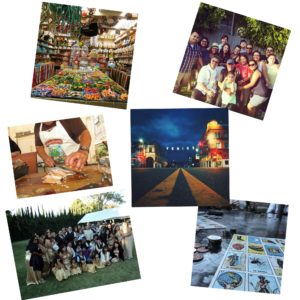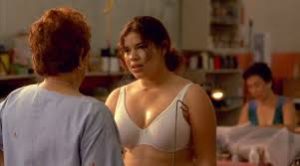In chapter three, “The Versus of the Godfather” in the book Next of Kin: the Family in Chicano/a Culture Politics Richard Rodriguez discusses about the Chicana/o rap culture. Chicano rap or rap in general is a form of identity that helps in individuals express themselves throughout their lyrics. In Rodriguez’s book, he examines how Chicano and Latino rap addresses certain political and working class identity in the rap culture frame. He mentions how a popular culture forms such as rap can help “empowerment…within an everyday context” (Rodriguez, 96). Chicano and African American rap music share almost the same characteristics within their lyrics because they discusses about different aspects and narratives of their communities that they address throughout their music. However, Chicano rap is not as popular African American. On the contrast, Chicano Rap involves ties within family context as well through rap family narratives that impacts both black and Chicano culture. Rodriguez focuses on how the aspect of family is integrated into the art of rap kinship of gender and heterosexuality that are composed into the rap. It was interested to see how Rodriguez also discusses how Rap is an important aspect of the Chicano culture. Chicano rap incorporates historical and contemporary issues like the Chicano movements or current movements regarding the culture. Rodriguez mentions how “the evolution and dissemination of Chicano rap necessarily entails understanding the social phenomena that motivate and influence popular culture’s content and form” (Rodriguez, 104). Chicano rap or hip-hop culture demonstrate how the “power of the culture nationalism “ and the dominance of others towards “la Raza”. In the Chicano rap also focuses incorporates poetic aspect that about culture nationalism in the songs. On the contrary, Chicano rap revolve surrounds the aspect of family because of the struggles and unity “discourse to consistently involve it for the sake of political though and mobilization” (Rodriguez,133). Chicano hip-hop describes the content of family into their rap because Rodriguez empathizes the important of family kinship that is written and said in the music that involves Chicana/o family aspects. As a result, while reading Rodriguez’s text, I have thought a lot Chicano rap in present day, I come to think that Chicano rap is not heard as much as other hip-hops music. Do you think Chicana/o rap is not popular like other rap music because it involves a lot of the culture aspect or family kinship?
Monthly Archives: September 2016
Chicano Rap and Chicano Movement Poetry
In Chapter three of Next of Kin, The Verse of the Godfather, Rodriguez elaborates on Chicano Rap and brings up various famous Chicano rappers like Kid Frost. Rodriguez mentions how Chicano Rap is very similar to events occurring in the Chicano Movements because it is a way in which various rappers got their voice herd against things they are passing through or rap about their oppression. Chicano Rap empowers many youth Chicanos. He makes the connection between I am Joaquin by Corky Gonzalez, and La Raza by Kid Frost. “Chicano Rap and Chicano movement poetry must be read as resistance narratives, especially given how both emerge from youth culture and social movement”(Pg. 113). The poem I am Joaquin served to empower several Chicanos, and help them embrace their identity in a time where many Mexican-Americans felt they didn’t, and felt lost. La Raza also got the attention of several Chicano youth making them feel like they belong somewhere. Corky Gonzalez in general was a great speaker during the Chicano Movement, which made him the “godfather” for many Chicanos, and so is Frost because of his promotion to La Raza. Both I am Joaquin and La Raza are based on masculinity and brotherhood, however, it does not mention whatsoever anything about female, or even a queer perspective. Chicano Rap was based on a more patriarchal aspect not being inclusive of gender, and sexuality. In conclusion, I was intrigued by the connection that Rodriguez made about I am Joaquin, and La Raza. It was no surprise to me when I read that Chicano Rap was not popular like other types of music. Like always the minority group was devalued, yet it is fascinating to see that while some might not see it as important it helps to empowers, and encourages many Chicanos youth.
Photo Collage (Mi Familia)

This is my family and what makes us a family.
Dia De Los Muertos
The article Decoding The Food and Drink On A Day Of The Dead Alter by Karen Castillo Farfan was short but very informative. It is one of those reads that you come across but really enjoy. I liked how it didn’t just talk about what happens on the day of the dead but it also gave some background on its origins and its importance. This celebration dates back all the way to the Aztecs 3000 years ago. Everything is a very important component to the making of an Alter. I didn’t know that everything had a meaning like the sugar skulls being made out of sugar. Or Also, even though every alter has many material things in common, each one is completely different and special. Even though I am a Chicana I didn’t know much about its history. I have never done an Alter and my mom never grew up with that tradition in Mexico. She is from a small Pueblo in Mexico and she claims that no one ever really celebrated it. Once she migrated here she found out it was such a big event. Is anyone else in the same boat as me? Nonetheless, it is a beautiful tradition that brings people together and it keeps the memory of those who have passed, alive. I know that this is a very important day for many people who still mourn their beloved. I actually go to El Dia De Los Muertos festival in Santa Ana every year and it such a great experience. It is so cool to see the pictures of all these people and come acquainted to their favorite dishes. This tradition is also very rich in culture. What I wonder is how much it has changed since it started 3000 years ago? Do just Mexicans celebrate it or has it spread to to other Spanish speaking countries?
Photo Collage

Photo Collage- My life

Decoding The Food And Drink On A Day Of The Dead Alter

The article “Decoding The Food And Drink On A Day Of The Dead Alter”, gives a brief history on the origins of this holiday. They begin by explaining that its rooted from the Aztecs who believed one should not grieve the lost of a loved one but rather celebrate their lives once a year when their spirits make their way back to earth. The article then explains that everything on an alter has meaning, such as sugar skulls who represent the vitality of life, and decorated tissue paper which is meant to represent the fragility of life. This article made me so hungry, I love Pan De Muerto so much! This article also made me really happy because i love the traditions of my culture, Dia De Los Muertos is one of my favorite holidays. For myself the holiday is special and important, one of my jobs is a sales associate at Pier one Imports and around this time we sell Dia de los Muertos decorations and it sometimes bothers me when i see people buying them for halloween decorations because its not meant for halloween and i find myself getting really defensive sometimes. Does anyone else feel that way? Like when i see the sugar skull costumes, used as halloween costumes i’m like really? Every year my family and I make a beautiful Alter in our home. This is the first year that its going to be really special for me though, I lost my grandfather earlier this year and he was my best friend, so I’m really excited to be able to honor him this year for Dia De Los Muertos.
Week 5. “Photo Collage”: “Mi familia es mi vida!”

Mi Familia <3
I chose these four pictures because these images our of all my family. Starting with the first image on the top left; which is my sisters, my parents, my nephews/niece, my brother in laws, and of course myself. This day was unforgettable because all my family was present and we all had a great time in the snow. The image on the bottom left; is my sisters and i. This picture is significant because these are all my siblings, which i care deeply about. The last two images on the right; are of my parents, then and now. I added these two images because they re the foundation of my family and because of their love, our family is very close and connected!
The Maid, the Drug Dealer, the Latin Lover, Oh My! Latin Stereotypes in Film and TV
After reading chapter 2 of Rodriguez’s book and Noriega’s article, I started thinking about how the Hollywood industry has treated Latinos in film and television. For the most part, Latin actors have been typecast to play roles that give in to the stereotypes about Latinos. In addition, these actors also seem to be typecast to play Mexican characters, even if they are not from Mexico. In my opinion, this is becoming a much bigger problem than a couple of decades ago since the Latino population in the United States is rapidly growing.
The Huffington Post published an article (http://huffpost.com/us/entry/4039490) a couple of years ago titled “10 Latino Stereotypes That Must Go.” In this article, The Huffington Post put together a video of clips that demonstrate some of the popular Latin stereotypes that Hollywood needs to let go of. The video shows clips from films and TV shows, both old and modern, that show Latin actors playing the maid, drug dealer, and “Latin lover” roles. But, Latinos are more than these glorified clichés and this needs to change. Therefore, Hollywood needs to start to open its eyes and needs to provide these Latin actors roles that will make them the next Oscar or Golden Globe winner instead of another stereotypical punch line.
Curvas sin Frenos: Film Review of Real Women Have Curves

Real Women Have Curves is a coming-of-age, funny, and charming movie that deals with issues of gender by displaying the struggles of poor Hispanic women living in East Los Angeles. The Garcia family is portrayed as the nuclear heteropatriarchy Chicano famliy that Richard Rodriguez describes in Next of Kin which represents the wife-mother as a woma who’s sole purpose in life is to support her husband, raise her children, and be mindlessly obedient to everything she is expected to do as a woman. However, Rodriguez’s thoughts on the Chicano family is evidently interrupted by the character of Ana. Through Rodriguez’s eyes, Ana would most likely be viewed as “antifamilia” because she personally desires liberation from her family, despite her mother’s belief that a woman should not be allowed to think for herself. Throughout the film, Ana is seen stuck in a crossroads due to the fact that the sense of duty to her family, which has been instilled in her throughout her life by her mother, is keeping her from fulfilling her dreams of going to college. Thus, this obligation to fulfill her family duty consequently traps Ana to traditional Latina roles. Still, as the film progresses , Ana is slowly breaking away from these traditional Latin women roles.
Moreover, throughout the film, the mother-daughter relationship that Rodriguez also highlights in his text is being testes. Ana is seen constantly arguing with her mothet Carmen over one another’s ideas of what a “real woman” is and looks like. The definition of “real woman” “is essentially the main theme of the film, as suggested in the title. While Carmen believes that a real woman is someone who is young and thin, and who is defined by her husband, Ana believes the opposite. She believes that a woman is more than her weight, sexuality, and her servitude to her husband. The movie displays a diverse group of Latinas, in regards to beauty, to try to determine this definition; yet, regardless, the movie ends up validating Ana’s perspective by allowing her to be accepted for who she is, and then attaining independence by defying her mother and departing from her family.
All in all, the character of Ana is used in the film as a feminist critique of Latin cultural norms that pressure women into serving the heteropatriarchy. For the most part, the women, in general, are portrayed as women who have given up on their dreams in exchange for patriarchal servitude. But, then, there’s Ana, who is the opposite, who is able to lead these women into slowly realizing the errors of their ways at the end. This is shown after the women follow in Ana’s lead in taking off their shirts as a way of liberation. Although, Carmen trys her best to convince Ana to compromise her personal independence and accept a traditional life of humble labor and enslavement to a man, fortunately, Ana is able to reinforce the feminist message that nothing and nobody can take a woman’s independence away. Therefore, Ana becomes a representative of the real woman that the film desires to define through liberating herself from patriarchy by pursuing personal fulfillment that patriarchy opposes.
My personal opinion of Real Women Have Curves is mostly positive. I can relate to Ana, both in her views of a “real woman” and by pursuing a college education instead of becoming another Latina cliché. It’s also refreshing to see a woman who is not white or thin in film who is just as talented as the actors who had defined beauty in Hollywood at the time of production. I would recommend this movie to all the young Latinas out there as inspiration to find themselves despite the pressure to stick to cultural or familial norms. Real Women Have Curves provides women the opportunity to open their eyes to the wickedness of patriarchy in the same way Ana opens her eyes.
